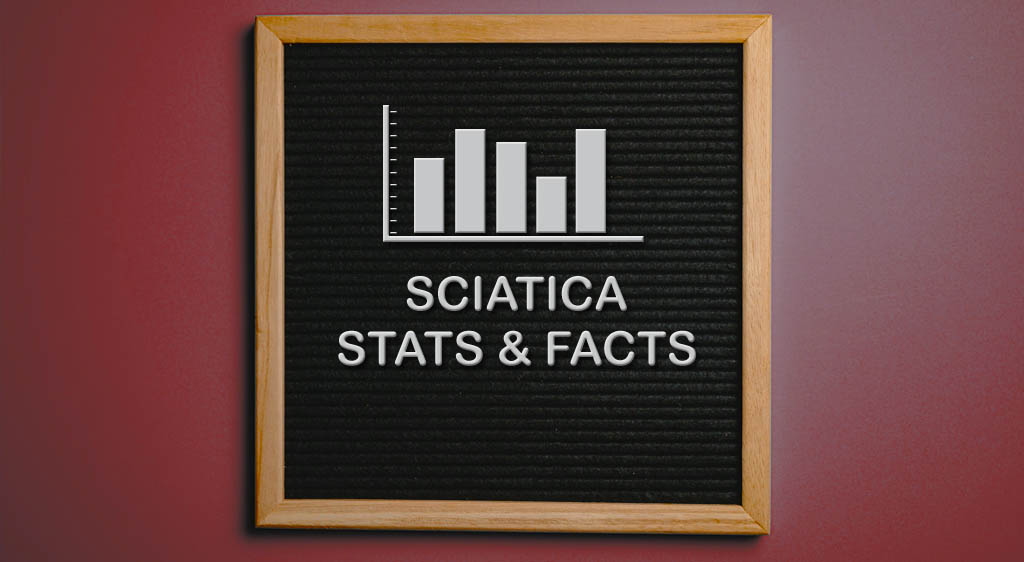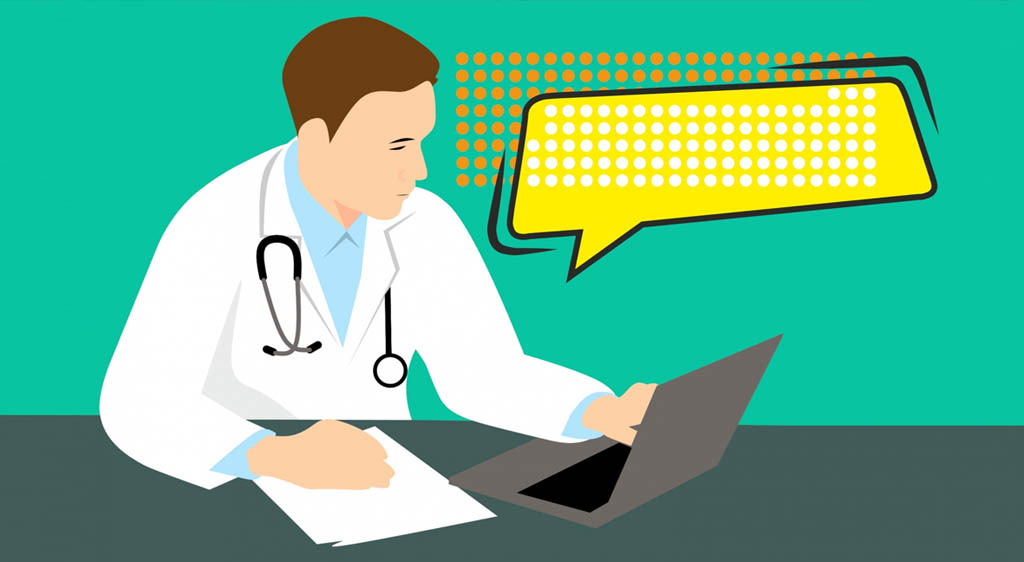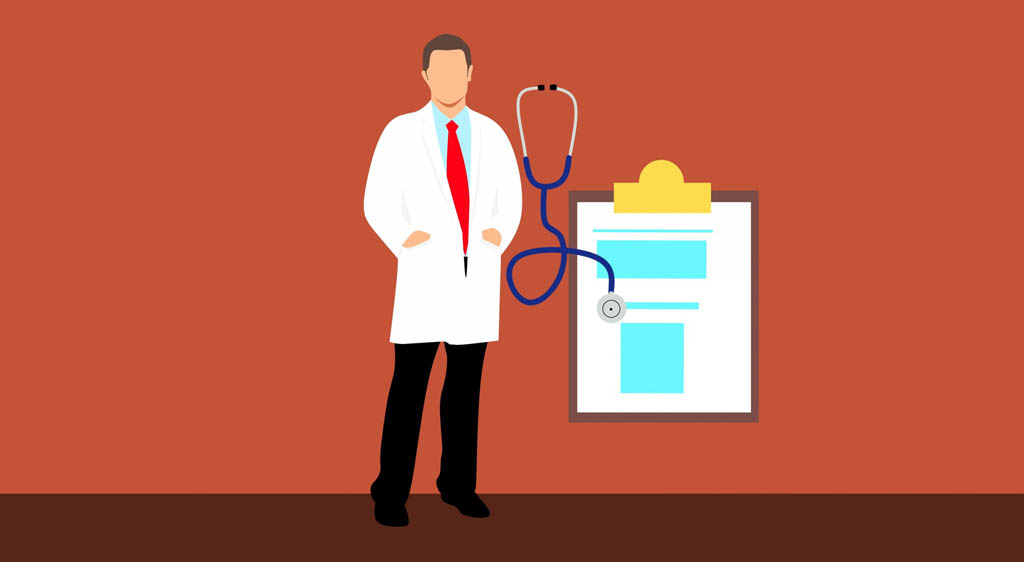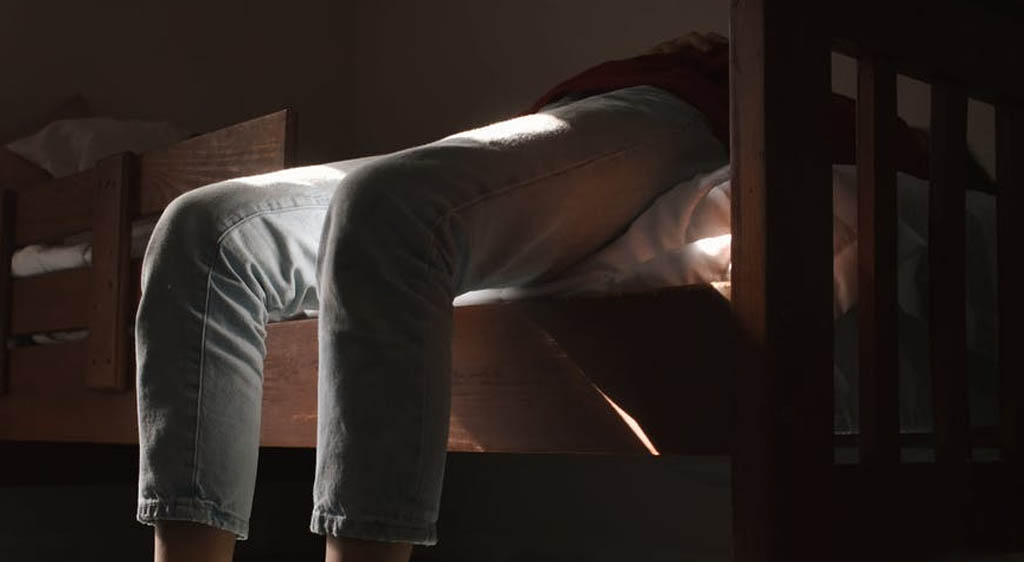Mattresses
SHOP STANDARD SIZES
SHOP STANDARD SIZES
SHOP BY TYPE
SHOP BY BRAND
RV Mattresses
Adjustable Beds
Shop By Brand
Shop By Size
Oversized Beds
Sciatica Statistics
Sciatica is pain felt when the sciatic nerve is badly affected. The sciatic nerve is the longest nerve in the human body. The sciatic nerve starts from the lower back. It branches as it goes through the hips, deep into the musculature of the buttocks, and down the back of the thighs all the way to the heel and sole of the feet. Sciatica occurs when the nerve is irritated, compressed, or inflamed. A common cause of sciatica is when a herniated disc, a bone spur on the spine, or spinal stenosis (narrowing of the spine) compresses a part of the sciatic nerve. As a result, inflammation, pain, and even some numbness ensue in the affected leg. The pain can radiate from the lower back, pass through the buttock, and down the back of the leg.
(Spine Health), (Mayo Clinic)
The Most Surprising Sciatica Statistics
- Sciatica statistics estimate that 5 to 10% of people with low back pain have sciatica.
- About 20 to 30% of people with acute sciatica have persisting problems after one or two years.
- About 90% of sciatica cases is due to a herniated disc with nerve root compression.
- The annual prevalence of sciatica due to disc problems is about 2.2%.
- As many as 40% of people will have sciatica at some point in their life.
- About 1 to 5% of people can have sciatica per year.
- Sciatica rarely occurs before the age of 20 unless there is a traumatic experience.
- So far, there is no relationship between sciatica and body height except in people between the ages of 50 of 60.
(Dr. B.W. Koes), (Dr. David Davis)
General Sciatica Statistics and Facts

History
1. Hippocrates referred to pain felt around the hip or thigh that affected men between the ages of 40 and 60.
The ancient Greeks were aware of the sciatic nerve and used the term “sciatica” to refer to the pain around the hip or thigh. Hippocrates found that young men claimed that the pain lasted for about 40 days before spontaneously resolving. He also noted that pain radiating to the foot was a good sign, while pain that stayed on the hip was unlikely to resolve.
(Oxford Academic)
2. In 1764, the Italian anatomist Domenico Cotugno wrote the first book on sciatica.
Since writing about the condition, sciatica was known as Cotugno’s disease for many years. Cotugno was the first to distinguish sciatica due to nervous disease from the aching pain associated with low back pain. He found that sciatica could be continuous or intermittent and noted that continuous pain could become intermittent, but not vice versa.
(Oxford Academic)
3. By the 19th century, many thought that sciatica was due to various rheumatic conditions that cause inflammation of the sciatic nerve.
However, people still struggled to pinpoint an exact cause and identify an effective treatment.
(Oxford Academic)
4. In the early 20th century, the intervertebral disc was thought to be a factor in causing sciatica.
Posterior disc protrusions were observed in post-mortem studies. However, no one could link these to sciatic pain and it was concluded that they were probably asymptomatic. In an early surgical management of sciatica, removing cartilaginous “tumors” from the spinal canal improved symptoms. These “tumors” were prolapsed disc material. Eventually, the prolapsed intervertebral disc has been irreversibly linked with the pathogenesis of sciatica.
(Oxford Academic)
Sciatica Characteristics
5. Sciatica can be present in 3.1 to 5.3% of men and 1.3 to 3.7% of women.
Interestingly, however, women experience more pain in more parts of the body, with greater frequency and for longer periods compared to men. Possible explanations may include differences in emotional and coping responses to pain between men and women.
(Dr. Williams Lewis), (Dr. Wilco Peul)
6. Sciatica is probably because of a herniated lumbar disc when pain is reproduced upon hip flexion between 30 to 70 degrees and when the pain is mostly felt in the back.
On the other hand, pain and parenthesia that are felt in the leg are probably because of lateralizing compression of a peripheral nerve.
(Dr. David Davis)
7. About 10 to 40% of sciatica cases develop into chronic pain syndrome.
However, most patients with acute sciatica respond to conservative symptomatic management and resolve over a period of weeks to months. Some may not even need surgery. Unfortunately, it is difficult to predict early those who are more likely to have a poor outcome.
(British Journal of Anaesthesia)
8. The risk of sciatica increases by 40% for every additional 10 years of age.
The incidence of sciatica is related to age. As the human body gets older, the spine can degenerate, which can bring about poor changes in the intervertebral discs, bone spurs and spinal stenosis. The incidence peaks during the 50s and declines afterwards.
(British Journal of Anaesthesia), (Very Well Health)
9. The intervertebral disc usually start to degenerate around the age of 30.
Thus, the risk of developing sciatica begins around then. Moreover, spinal stenosis usually starts to develop in people aged 50 years or older.
(Very Well Health)
Sciatica Diagnosis

10. The crossed straight raising test has a pooled specificity of 88%, but a pooled sensitivity of only 29%.
The crossed straight raising test is a test for the presence of a herniated lumbar disc. To do the test, you would lay down on your back. An examiner will passively flex the hip of the unaffected side while keeping the knee in full extension. The test is positive for a herniated lumbar disc if you feel pain on the affected side when the leg is at 40° of hip flexion or less.
(Dr. B.W. Koes), (Dr. William R. Hudgins)
11. On the other hand, the straight leg raising test has an estimated pooled specificity of 26%, but a pooled sensitivity of 91%.
The straight leg raising test is also called Lasègue’s sign, although it was first described by Dr. Lazarevic. It is also used to check for lumbar discopathy (a degenerated lumbar disc), lumbar nerve root impingement, or irritation due to a herniated disc. However, it can also give a positive result for a herniated lumbar disc. To do the test, you would be lying down. The examiner tests each leg individually with the normal leg being tested first. An examiner gently raises your leg by flexing the hip with the knee in extension. The test is positive if you feel pain when the raised leg is between 30 and 70°.
(Dr. B.W. Koes), (Dr. Gaston O. Camino Willhuber and Dr. Nicolas S. Piuzzi)
12. Between 20 and 36% of people without symptoms who do not have sciatica may still have a herniated disc.
As an alternative to physical examination, imaging techniques such as magnetic resonance imaging, can be used to visually check for herniated discs.
(Dr. B.W. Koes)
Prognosis
13. A study found that 60% of people with acute sciatica recovered within 3 months.
The same study also found that 70% of the patients recovered within 12 months. Acute sciatica generally has favorable outcomes In another study, about 50% of patients with acute sciatica included in placebo groups in randomized trials of non-surgical interventions reported improvement within 10 days while 75% reported improvement after 4 weeks. Generally, most pain and related disability resolve within 2 weeks.
(Dr. B.W. Koes), (National Center for Biotechnology)
Sciatica and Sleeping
14. Sciatica can flare up when 1 of the 5 sciatic nerve roots in your lower back is compressed or irritated.
This can occur when you lie down to sleep. To work around this, you can elevate your knees. By doing so, you can lower the pressure your lumbar discs put on your nerve roots.
(Spine Health)
15. Put ice on sore areas for 20 minutes once every 2 to 3 hours.
Sleeping with pain can be difficult. To help lower the swelling and pain in sciatica, you can put an ice or cold pack on problems areas like the lower spine, tailbone, or buttocks.
(Pain Doctor)
16. Find an ideal sleeping surface.
The best mattresses for sciatica conform to your body without hugging too tightly or sagging excessively. This helps keep your spine aligned. Thus, a firm mattress may help you sleep better if you have sciatica. You may also try sleeping on the floor with a mat or sheet under you.
(Pain Doctor), (Bonati Institute)
17. Find a sleeping position that works for you.
Some people find relief when they sleep on their back. However, some still prefer to sleep on their side. Doing so can put a twisting pressure on your lower back, which irritates the sciatic nerve. If you sleep on your side, it is advisable to put a pillow between your legs to reduce this pressure and keep your spine and leg in neutral position.
(Align Health and Wellness)
Treatments
18. Chiropractic adjustments can successfully treat as many as 72% of people with sciatica.
Chiropractors commonly treat people with sciatica. Since sciatica can be caused by sciatic nerve compression due to herniated discs or a misaligned lumbar spine, spinal manipulation from chiropractic adjustments can help relieve the pressure.
(Dr. Leo H. Visser)
19. Lumbar epidural steroid injections can successfully treat as many as 80% of people with sciatica from herniated lumbar discs.
An epidural steroid injection (ESI) is a minimally invasive procedure. Steroidal medicines are injected into the epidural space, which is an area between the bone and protective sacs of the spinal nerves. The medicines can help relieve neck, arm, back, and leg pain caused by inflamed spinal nerves due to spinal stenosis or disc herniation.
(Dr. G.E. Lutz), (Mayfield Brain & Spine Clinic)
20. Physical therapy for 12 months can treat 49 to 58% of people with sciatica.
Physical therapy can include passive treatments, such as heat or cold packs, or active treatments, such as therapeutic exercises.
(Anne Julsrud Haugen, PhD), (Spine Universe)
21. About 95% surgeries for sciatica are successful.
When severe sciatica is due to a herniated, surgery is a valid option. Microdiscectomy is a common surgical procedure for treating sciatica due to a herniated lumbar disc. In the procedure, surgeons remove a small portion of the disc under the nerve root or bone over the root.
(Spine Health)
Conclusion
Sciatica is a common and painful condition. Thankfully, however, it is one whose treatments are non- or minimally invasive. It is also a condition with a high recovery rate. Knowing your options when you have sciatica can help you recover successfully and continue your life pain-free.
References
Spine Health:
https://www.spine-health.com/conditions/sciatica/sciatic-nerve-and-sciatica
Mayo Clinic:
https://www.mayoclinic.org/diseases-conditions/sciatica/symptoms-causes/syc-20377435
Koes et al., 2007:
https://www.ncbi.nlm.nih.gov/pmc/articles/PMC1895638/
Davis et al., 2020:
https://www.ncbi.nlm.nih.gov/books/NBK507908/
Stafford and Peng, 2007:
https://academic.oup.com/bja/article/99/4/461/305514
Lewis et al., 2011:
https://www.ncbi.nlm.nih.gov/books/NBK99305/
Peul et al., 2008:
Very Well Health:
https://www.verywellhealth.com/who-is-at-risk-for-sciatica-297243
Hudgins, 1979:
https://pubmed.ncbi.nlm.nih.gov/469603/
Willhuber and Piuzzi, 2020:
https://www.ncbi.nlm.nih.gov/books/NBK539717/
Weber et al., 1993:
https://pubmed.ncbi.nlm.nih.gov/8235813/
Vroomen et al., 200:
https://pubmed.ncbi.nlm.nih.gov/11132976/
Spine Health:
https://www.spine-health.com/blog/3-little-known-tips-sleeping-sciatica
Pain Doctor:
https://paindoctor.com/sleeping-with-sciatica/
Bonati Institute:
https://www.bonati.com/blog/15-helpful-tips-sleeping-sciatica/
Align Health and Wellness:
https://www.alignhealthandwellness.com/low-back-pain-sciatica/sciatica-a-guide-to-sleeping-positions-and-finding-natural-relief/
Visser et al., 2013:
https://pubmed.ncbi.nlm.nih.gov/23720124/
Lutz et al., 1998:
https://pubmed.ncbi.nlm.nih.gov/9821894/
Mayfield Brain & Spine Clinic:
https://mayfieldclinic.com/pe-esi.htm
Haugen et al., 2011:
https://www.ncbi.nlm.nih.gov/pmc/articles/PMC3175874/
Spine Universe:
https://www.spineuniverse.com/conditions/sciatica/physical-therapy-relieve-sciatica
© 2025 Rest Right Mattress. All Rights Reserved.





